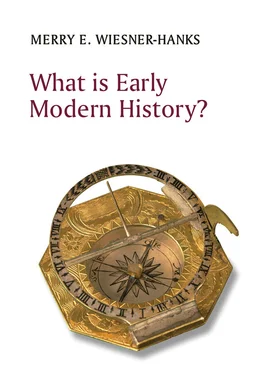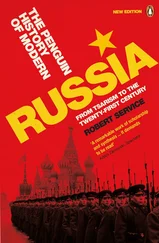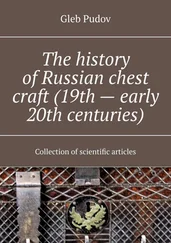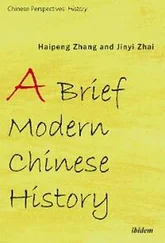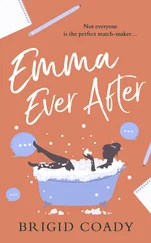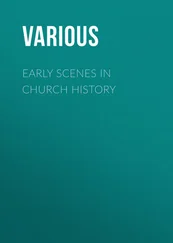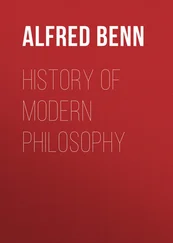Merry E. Wiesner-Hanks - What is Early Modern History?
Здесь есть возможность читать онлайн «Merry E. Wiesner-Hanks - What is Early Modern History?» — ознакомительный отрывок электронной книги совершенно бесплатно, а после прочтения отрывка купить полную версию. В некоторых случаях можно слушать аудио, скачать через торрент в формате fb2 и присутствует краткое содержание. Жанр: unrecognised, на английском языке. Описание произведения, (предисловие) а так же отзывы посетителей доступны на портале библиотеки ЛибКат.
- Название:What is Early Modern History?
- Автор:
- Жанр:
- Год:неизвестен
- ISBN:нет данных
- Рейтинг книги:5 / 5. Голосов: 1
-
Избранное:Добавить в избранное
- Отзывы:
-
Ваша оценка:
- 100
- 1
- 2
- 3
- 4
- 5
What is Early Modern History?: краткое содержание, описание и аннотация
Предлагаем к чтению аннотацию, описание, краткое содержание или предисловие (зависит от того, что написал сам автор книги «What is Early Modern History?»). Если вы не нашли необходимую информацию о книге — напишите в комментариях, мы постараемся отыскать её.
What is Early Modern History?
What is Early Modern History? — читать онлайн ознакомительный отрывок
Ниже представлен текст книги, разбитый по страницам. Система сохранения места последней прочитанной страницы, позволяет с удобством читать онлайн бесплатно книгу «What is Early Modern History?», без необходимости каждый раз заново искать на чём Вы остановились. Поставьте закладку, и сможете в любой момент перейти на страницу, на которой закончили чтение.
Интервал:
Закладка:
Writers in the sixteenth and seventeenth centuries increasingly used the word “middle” – middle season, middle centuries, middle age – to describe the period between the fall of ancient Rome and their own era. Following Bruni, they divided European history into three parts: ancient (to the end of the Roman Empire in the West in the fifth century); medieval, a word that comes from medium aevum , Latin for middle age (from the fifth century to the fifteenth); and what they usually called “new” ( novum in Latin, from the fifteenth century forward). This three-part division became extremely influential, and is still in use today to organize course offerings, library and bookstore holdings, museums, and even how people think of themselves. On introducing themselves at a conference, scholars often say, “I’m a medievalist” or “I’m an ancient historian.”
The word “modern” comes from the Latin modernus , a word invented in the sixth century ce to describe the new Christian age in contrast to pagan antiquity ( antiquus ). “Modern” was generally juxtaposed with “ancient” into the eighteenth century, but at the end of that century “modern” was increasingly used for things judged to be radically new, and became oriented toward the future rather than contrasted to the past. 3What the humanists had called the “new” period of history became the “modern,” with its origins not only in the Renaissance, but also in the first voyage of Columbus (1492), and the beginning of the Protestant Reformation (1517). These three developments – and others, depending on who was writing – were understood to usher in the modern world, or at least to begin the process of ushering it in.
Dividing history into units of time is called “periodization.” This rather clunky word is at the heart of what historians do to make meaning of the past. They decide – and discuss, debate, and argue over – which events and developments should be brought together to form some sort of coherent whole, and what the key turning points are between one era and another. Periodization is a fundamental historical methodology and analytical skill, essential to the chronological reasoning and consideration of change and continuity that are the basis of historical thinking. Most often this is done after the fact; no one living in tenth-century Europe knew they were living in the “Middle Ages,” just as no one fighting in France in the fourteenth century knew they were fighting what would come to be called the Hundred Years’ War. In more recent history, people in the 1920s knew the economy was generally prospering and lifestyles were changing, but only after the Wall Street Crash of 1929 did they know it would be the decade of the 1920s, and not a shorter or longer period, that would be called “roaring.” And only after the economic downturn ushered in by the Crash was over would people know it was the deepest and most widespread ever, hence the “Great Depression.”
Periodization is something that historians do, but so do ordinary people when thinking about their own lives. In the Middle Ages and the Renaissance, people debated how many stages there were in a human life. They increasingly accepted the notion that there were seven, at least for men, corresponding to the seven known planets (the planets out to Saturn plus the moon). Discussions of what were called the “ages of man” abounded. 4They were depicted in manuscript illuminations, stained-glass windows, wall paintings, and cathedral floors so that people who could not read were also familiar with them. Sometimes these showed women as well, though the female life-cycle was more often conceptualized and portrayed as a three-stage one: childhood to age twelve, adulthood peaking at age twenty-five, and old age beginning at forty, often described as virgin/wife/widow. 5For us today, life stages are more personal and idiosyncratic. We decide – again usually after the fact – which changes mark dramatic breaks, and which years of our lives form an intelligible grouping. We decide that an event experienced when we are forty marks a “mid-life crisis,” or perhaps that something experienced when we are thirty or fifty or even sixty does. We may use period labels for ourselves given by others – “I’m a boomer,” “I’m a millennial,” “I’m middle-aged” – but also dispute these. Periodization is always an interpretive act.
Whether personal or historical, certain period labels contain clear value judgments, which leaves them more open to dispute than others. “Renaissance” is among these. Vasari clearly understood the rebirth of classical culture he saw happening around him as something important, and something good. Historians and others since then have disputed both of these judgments. They have pointed out that the cultural and intellectual changes that were at the heart of the Renaissance affected only a tiny group, mostly relatively wealthy, well-educated men who lived in cities. More than forty years ago the historian Joan Kelly posed the question, “Did women have a Renaissance?” to which her answer was no. 6There were far more continuities than change for most people, male and female, and many social groups saw decline rather than advance. In addition, because the Renaissance was an intellectual and cultural movement rather than strictly a time period, it fit somewhat awkwardly into the ancient/medieval/modern scheme. Yes, it was understood to be one development that had led to the modern world, but the Renaissance in Italy overlapped the later medieval period, and the Renaissance in northern Europe the beginning of the modern period. The dividing line between medieval and modern was increasingly set at about 1500, with the Renaissance viewed as a bridge period, or limited only to cultural history.
Creating “early modern”
Among those who had doubts about the significance of the Renaissance was the medieval historian Lynn Thorndike. In his A Short History of Civilization , published in 1926, he explicitly rejected the idea that the “so-called Italian Renaissance” (his terminology) by itself had brought anything new. 7He introduced a new, and what he saw as a broader and better term: “early modern.” In the 1940s, several articles used the term to discuss economic issues related to early English colonization and the English Civil War, two topics that had never fit very well under the rubric “Renaissance.” By the 1950s, “early modern” was being used more widely in economic history, especially in surveys, but it was not well known beyond this. J.H. Elliott reports that when he and H.G. Koenigsberger proposed a series to Cambridge University Press in the early 1960s with the title “Cambridge Studies in Early Modern History,” it was turned down because no one knew what “early modern” meant, though by 1966 CUP had agreed, and the series was launched. 8Increasing numbers of social and political historians picked up the term in the 1970s and 1980s. At this point, using it in scholarly writing generally signaled an interest in theory derived from the social sciences, and particularly what is often called the Annales “school,” a group of French historians associated with the journal Annales , which had begun publication in 1929 but became especially influential after World War II. (For more on Annales , see Chapter 1.)
In the 1990s, the term spread more widely in scholarly research, publishing, and learned societies. Several other presses also began book series with “early modern” in their titles, and journals adopted it as well. The Sixteenth Century Journal added the subtitle “The Journal of Early Modern Studies” to its title; scholars in Canada started an online journal Early Modern Literary Studies ; historians at the University of Minnesota launched the Journal of Early Modern History: Contacts, Comparisons, Contrasts ; and the Journal of Medieval and Renaissance Studies changed its name to the Journal of Medieval and Early Modern Studies . In terms of scholarly organizations, scholars of German history and literature in the United States started the group Frühe Neuzeit Interdisziplinär (The Interdisciplinary Early Modern), cultural studies scholars formed the Group for Early Modern Cultural Studies (which later set up the Journal for Early Modern Cultural Studies ), and scholars of women and gender formed the Society for the Study of Early Modern Women (which also later began publishing a journal, Early Modern Women: An Interdisciplinary Journal ). Some historians of areas other than Europe also began to use “early modern,” often viewing increased global interactions and connections as the defining characteristics of the era.
Читать дальшеИнтервал:
Закладка:
Похожие книги на «What is Early Modern History?»
Представляем Вашему вниманию похожие книги на «What is Early Modern History?» списком для выбора. Мы отобрали схожую по названию и смыслу литературу в надежде предоставить читателям больше вариантов отыскать новые, интересные, ещё непрочитанные произведения.
Обсуждение, отзывы о книге «What is Early Modern History?» и просто собственные мнения читателей. Оставьте ваши комментарии, напишите, что Вы думаете о произведении, его смысле или главных героях. Укажите что конкретно понравилось, а что нет, и почему Вы так считаете.
